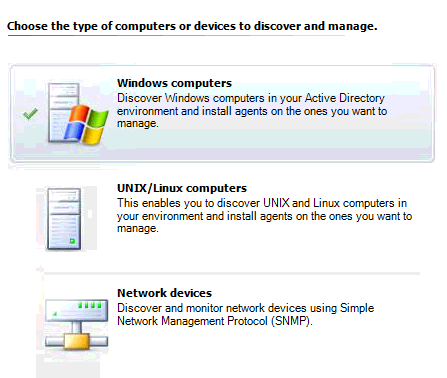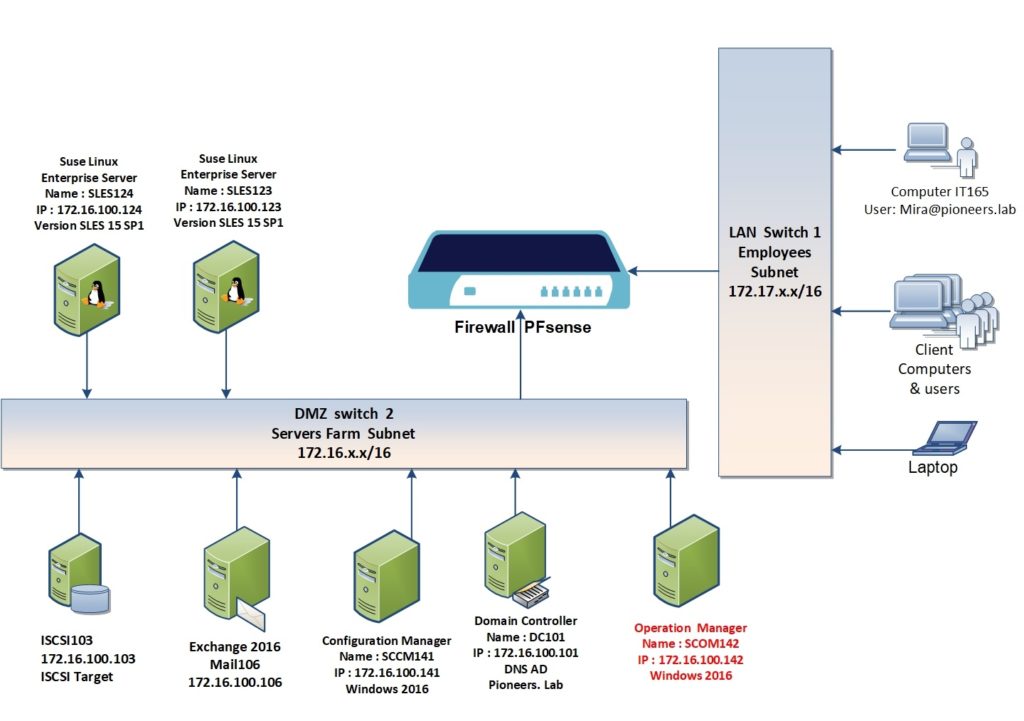introduction
this is first article of Manage SCOM agent series from SCOM course
in this article we will get an overview about some concept including but NOT limited to :
what is Operations Manager agents
Operations Manager agents
In System Center Operations Manager, an agent is a service that is installed on a computer and perform tasks like :
- configuration data
- proactively collects information for analysis and reporting,
- measures the health state of monitored objects like a SQL database or logical disk,
- execute tasks in response to a condition.
Agent allows Operations Manager to monitor Windows or Linux, or even UNIX operating systems and the components of an IT service installed on them
Windows Agent
Windows OS [server or windows10 ] , the Operations Manager agent is listed as the Microsoft Monitoring Agent service.
The Microsoft Monitoring Agent service do the following
- collects event
- performance data
- , executes tasks,
- and other workflows defined in a management pack.
In case the service is unable to communicate with the management server it reports to, the service continues to run and queues the collected data and events on the disk of the monitored computer.
When the connection is restored, the Microsoft Monitoring Agent service sends collected data and events to the management server
Linux Agent
The architecture of the UNIX and Linux agent differs from a Windows agent significantly.
The Windows agent has a Health Service responsible for evaluating the health of the monitored computer.
While The UNIX and Linux Agent does not run a health service,>> instead it passes information to the Health Service on a management server to be evaluated.
The management server runs all of the workflows to monitor operating system health defined in our implementation of the UNIX and Linux management packs:
- Disk
- Processor
- Memory
- Network adapters
- Operating System
- Processes
- Log files
Monitoring Network Devices
System Center Operations Manager can monitor physical network like routers and switches,
Operations Manager provides the following monitoring for discovered network devices:
- Connection health – Based on looking at both ends of a connection
- VLAN health – Based on health state of switches in VLAN
- HSRP group health – Based on health state of individual HSRP end points
- Port/Interface
- Up/down (operational & administrative status)
- Volumes of inbound/outbound traffic (includes abort, broadcast, carrier sense, collision, CRC rates, discard, error, FCS error, frame, giants, runts, ignored, MAC transmit/receive error, queue rates)
- % Utilization
- Drop and broadcast rates
please note the following :
- We can discover agent using SNMP [NOT active directory ]
- default port of SNMP 161
- Agent with [SNMP1,SNMP2] installed just need public account
- , while agent with SNMP3 need windows authentication [active directory account]
Client Agent Network Diagram
please have a look to pioneers.lab network diagram above :
we have SCOM server called SCOM142 with IP address 172.16.100.142
regarding SCOM client we have :
Windows agent [Server OS ] like :
- DC101 as domain controller
- SCCM141 as SCCM server
- Mail105 as Exchange server
- ISCSI103 as Storage server
Windows agent [windows OS ] like :
- IT165 as PC for IT staff
linux agent [suse OS ] like :
- SLES123
- SLES124
network device like :
- network firewall PFsense with IP address 172.16.100.11
SCOM agentless
Agentless meaning to monitor client OS without need to install agent
Agentless monitoring of devices is performed by either a management server or by another device that does have an agent, called a proxy agent
Agentless Limitation
- Agentless is Not firewall friendly >> some problems to deal with devices behind firewall
- Has some problem with Scalability à support only 60 agentless per management group , while number of agent could be up to 3000
- It still requires a license
- Most management packs won’t work with agentless – AD, Exchange, SQL, SharePoint etc ..
in Networks Pioneers : we highly don’t recommend to use SCOM agentless as it can effect your environment
Conclusion
first article of SCOM agent series was an overview about SCOM agent
next articles of SCOM agent series : wew ill see how to install SCOm agent and how to manage them



